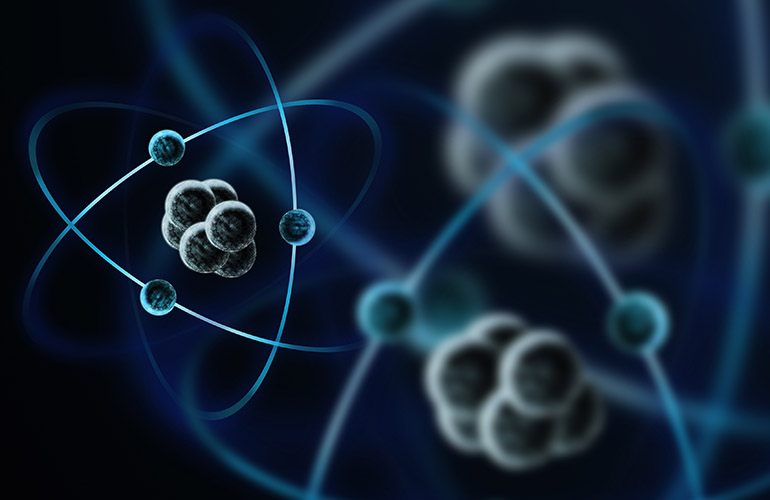In the realm of computational science, quantum computing emerges as a harbinger of transformative potential, particularly within the purview of drug discovery. The complex latticework of molecular interactions and biochemical pathways serves as an immense canvas where quantum mechanics can apply its unique characteristics, notably the principles of superposition and entanglement. This exploration invites a deeper investigation into how quantum computing could revolutionize the trajectory of pharmaceutical research and development.
When considering drug discovery, one must confront the intricate challenge of simulating molecular behavior with precision. Traditional classical computers, despite their remarkable capabilities, often reach a computational impasse when tasked with modeling large molecules and their interactions. These systems function as linear thinkers, processing one variable at a time, akin to a painter who must paint each stroke sequentially. Quantum computing, in contrast, possesses the extraordinary ability to exist in multiple states simultaneously—a phenomenon reminiscent of Schrödinger’s famed cat. It allows for the modeling of complex molecular systems without the constraints imposed by classical computing.
The innate strength of quantum computers lies in their qubits, the foundational units of quantum information. Unlike classical bits, which exist rigidly as either a 0 or a 1, qubits can simultaneously embody both states, enacting a multitude of probabilities—a characteristic that can be harnessed to forge expansive search spaces in molecular design. In drug discovery, this means a single quantum computation could evaluate the interaction of countless molecules with specific biological targets, expediting the screening process significantly.
The convergence of quantum mechanics and pharmacology tantalizes the imagination, inviting speculation about the concept of “molecules in superposition.” Imagine a world where potential drug candidates are not merely evaluated in isolation, but rather exist simultaneously in a multitude of configurations and binding affinities. This capacity could enable researchers to identify optimal molecular structures with extraordinary efficiency, uncovering pathways that would otherwise remain obscured in the labyrinth of biological complexity. The implications extend beyond mere speed; the quality of predictions could be profoundly enriched through the depth of information harnessed via quantum algorithms.
Consider the landmark advancements in machine learning, an avenue profoundly intertwined with quantum computing. Quantum neural networks could catalyze a paradigm shift, enhancing the learning processes utilized to recognize patterns within biological data. By leveraging quantum entanglement, these networks may establish correlations across vast datasets, unveiling latent relationships that are imperceptible to classical analytical techniques. This synthesis of quantum computing with machine learning not only augments drug discovery efforts but fosters a holistic understanding of disease mechanisms at the molecular level, facilitating the design of targeted therapies.
Moreover, the pharmaceutical industry grapples with the daunting challenge of polypharmacology—designing drugs that target multiple pathways to combat multifaceted diseases. Classical models often yield narrow insights, constraining researchers to linear pathways of understanding. Quantum computing, with its inherent ability to analyze and simulate multiple interactions concurrently, presents a robust framework for navigating this complexity. The metaphor of transitioning from a narrow stream to a vast ocean seems apt; researchers no longer skirt the surface but dive into the depths of molecular interaction with unprecedented clarity and depth.
However, as with any emerging technology, the journey toward harnessing quantum computing in drug discovery is fraught with challenges. Quantum decoherence, a phenomenon where quantum states lose their superpositional characteristics due to environmental interference, remains a significant hurdle. Efforts to devise stable quantum systems are paramount; akin to maintaining a delicate balance on a tightrope, researchers must ensure that quantum information remains intact for meaningful computations. Advances in quantum error correction methodologies and quantum gate fidelity are essential to preserving the nuances of molecular behavior.
Furthermore, the implementation of quantum computing into existing pharmaceutical frameworks necessitates a paradigm shift. Collaboration between multidisciplinary teams—quantum physicists, biochemists, and data scientists—is essential to navigate the intricacies of integrating this technology into drug discovery workflows. Educational endeavors must also evolve to cultivate a workforce proficient in quantum mechanics and its application in biological sciences, as a new breed of researchers emerges, equipped with the knowledge to bridge the chasm between biology and quantum theory.
Looking ahead, the prospect of quantum computing catalyzing breakthroughs in drug discovery holds promise not only for the pharmaceutical industry but also for public health at large. The accelerated discovery of new therapeutic agents may expedite responses to emerging health crises, optimize the developmental trajectory of personalized medicine, and demystify complex diseases that elude current medical understanding. Like the orchestrated dance of quantum particles, synchronized to form a coherent wave of innovation, drug discovery may soon experience an epoch defined by the efficient synthesis of knowledge and technology.
In conclusion, the advent of quantum computing heralds an exciting frontier in the quest for novel therapeutics. The metaphor of molecules in superposition encapsulates the unfolding possibilities—each configuration representing a potential innovation in combating diseases. As this nascent field flourishes, the dialogue between quantum mechanics and drug discovery will undoubtedly deepen, inviting scholars and practitioners alike to rethink the boundaries of what is possible in medicine. Indeed, a revolution is on the horizon, one that promises not only to untangle the complexities of molecular interactions but also to elevate the very essence of human health and wellbeing.












